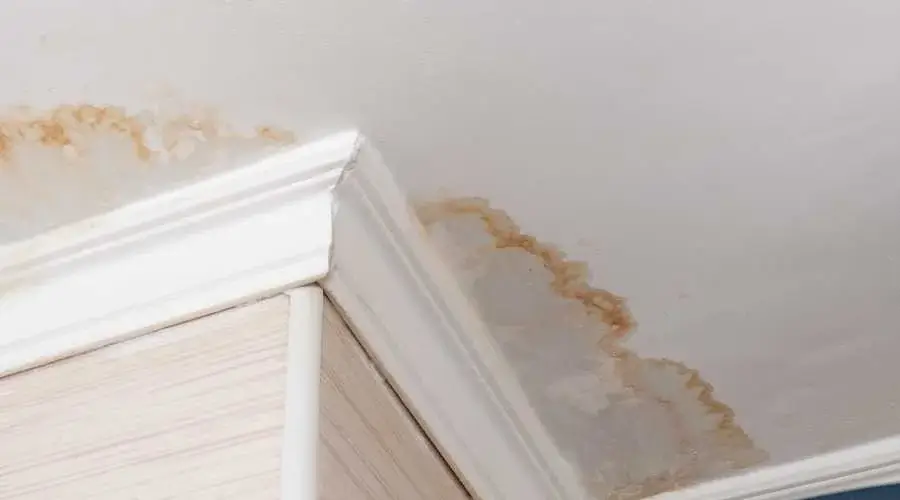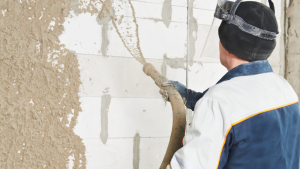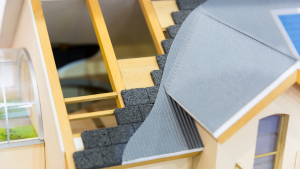Nobody enjoys learning that they have water damage within their walls. But individuals who own stucco houses built between the 2000s and the middle of the 2010s are now dealing with it. Water damage caused by improperly made stucco systems may be serious and expensive.
Your home’s structural stability might be jeopardized, and health risks may arise when water penetrates your walls. In light of this, it’s crucial to tell whether water has gotten trapped in your walls. A stucco remediation specialist should be hired immediately if water is in your walls.
The sooner your damaged house can be repaired, the better. Over time, water damage grows worse, increasing the expense of cleanup.
You should be aware of seven telltale indicators that your stucco has water damage. Water-damaged stucco may exhibit symptoms such as bubbling, crumbling, softening, staining, moss development, and mold growth.
1. Crack Formation
Not all cracks indicate that your stucco has been harmed by water. They could not even be an indication of injury. Several factors, like the sinking of your home’s foundation, may cause cracks in your stucco.
Naturally, none of this implies that you. should disregard any cracks in your stucco that you see. They wouldn’t be on this list if it did. However, if you see cracks growing, you should search the area for further indications of water damage.
Hairline fractures could indicate that there has been damage. But you may be able to depart from the cracks alone or merely cover them up if no additional symptoms are discovered. The primary problems are larger fractures. They can result from trapped moisture causing your stucco to expand and compress.
You need to correct it even if the bigger break shows no additional evidence of water damage. Even though the fracture may not have been created by water, it may allow water to enter your walls and cause damage.
2. Staining
Staining is a reliable indicator that moisture is having an impact on your walls. For instance, you can see streaks that appear filthy where water runs, as from the corners of your windows. In this instance, faulty installation or a lack of flashing might be the issue.
Along with streaks, black patches may also be seen. The moisture that has been trapped within the wall may be the cause of these discolored areas. It won’t do any good to just paint over the discoloration since it is the result of a deeper issue.
An area of your stucco walls that is discolored may seem moist. This is fine if it happens just after a thunderstorm. However, if the wet-appearing areas continue, it can be a problem. When checking for dark areas, the vicinity of cracks is an excellent place to start since here is where water may be entering the wall.
3. Moss Growth
The presence of moss does not always mean that water has seeped into your walls and is causing harm. However, it indicates that water must be adequately diverted from your walls. Additionally, if water is not correctly delayed away from your walls, it may eventually cause damage.
Most often develops at the foot of walls and where water flows down them. Your gutters or flashing may malfunction if water is dripping down your walls. And if moss is growing at the base of your walls, it may be because there isn’t enough space between the wall’s termination and the ground.
If you see moss developing on your stucco or any other kind of siding, it’s likely time to make some repairs.
4. Mold Growth
Unlike most growth, mold formation often indicates that water is trapped inside your walls. Mold grows best in dim, wet environments, such as behind moist walls. Mold may be present if you detect black stains on your stucco. There is also more mold within your walls if visible from the outside.
For two primary reasons, mold is harmful. To start with, it could be detrimental to your health. The mold might harm those who live in your house in your walls. The second indication is that the wooden timbers within your walls are probably deteriorating. Your walls become less structurally sound as the beams decay.
5. Surface Crumbling
Your deteriorating stucco’s surface should be rather obvious. Surface damage is not always the result of water, however, it is often an indicator of underlying deterioration. It’s a warning, however, that something within your walls needs to be fixed. Your walls are more susceptible to harm as the surface wears away. More harm causes more layers to come off. And as more layers erode, the harm increases. It results in continuous damage to your house.
Whether the freshly exposed layers feel damp or mushy to the touch, you may be able to tell whether the cause of the cracking is water damage.
The fact that there are fewer layers insulating your property from water is another issue with surface cracking. Water will inevitably pass through stucco since it is a porous material. However, you want to keep the water in so it can efficiently be expelled from the walls.
6. Soft Spots
Typically, additional indications of water damage go along with soft patches on your stucco. Your walls will undoubtedly have soft patches if they have moss or mold on them. If there is staining, it will generally be on a soft area.
But you may check the region for soft areas if you see cracks or other damage not necessarily brought on by water. If you locate them, you have probably identified the offender.
7. Surface Bubbling
An indication of water damage is bubbling, which often appears with mushy patches and cracking. It takes place when heated moisture seeps beneath or between the layers of your stucco. Because water collects at the bottom of walls, bubbling is often observed there.
CMB East Brunswick Stucco & EIFS Repair Remediation
Contact CMB East Brunswick Stucco & EIFS Repair if your stucco property shows evidence of water damage. We’ll visit your home to check your walls and inform you of your next steps.




